A simple blueprint for building AI-powered customer service on GCP
Lee Boonstra
Developer Advocate, Conversational AI
As a Google Cloud customer engineer based in Amsterdam, I work with a lot of banks and insurance companies in the Netherlands. All of them have this common requirement: to help customer service agents (many of whom are poorly trained interns due to the expense of hiring) handle large numbers of customer calls, especially at the end of the year when many consumers want to change or update their insurance plan.
Most of these requests are predictable and easily resolved with the exchange of a small amount of information, which is a perfect use case for an AI-powered customer service agent. Virtual agents can provide non-queued service around the clock, and can easily be programmed to handle simple requests as well as do a hand-off to well-trained live agents for more complicated issues. Furthermore, a well-designed solution can help ensure that consumer requests, regardless of the channel in which they are received (phone, chat, IoT), are routed to the correct resource. As a result, in addition to the obvious customer satisfaction benefits, research says that virtual agents could help businesses in banking and healthcare alone trim costs collectively by $11 billion a year.
In this post, I’ll provide an overview of a simple solution blueprint I designed that may inspire you to meet these objectives using GCP. Similar solutions that integrate with existing call center systems can be obtained through Cloud Contact Center AI partners, as well.
Requirements and solution
All businesses have the goal of making customer service effortless. With an AI-powered approach, a system can be designed that can accommodate consumers however they choose to reach out, whether by telephone, web chat, social media, mobile apps, or smart speaker.
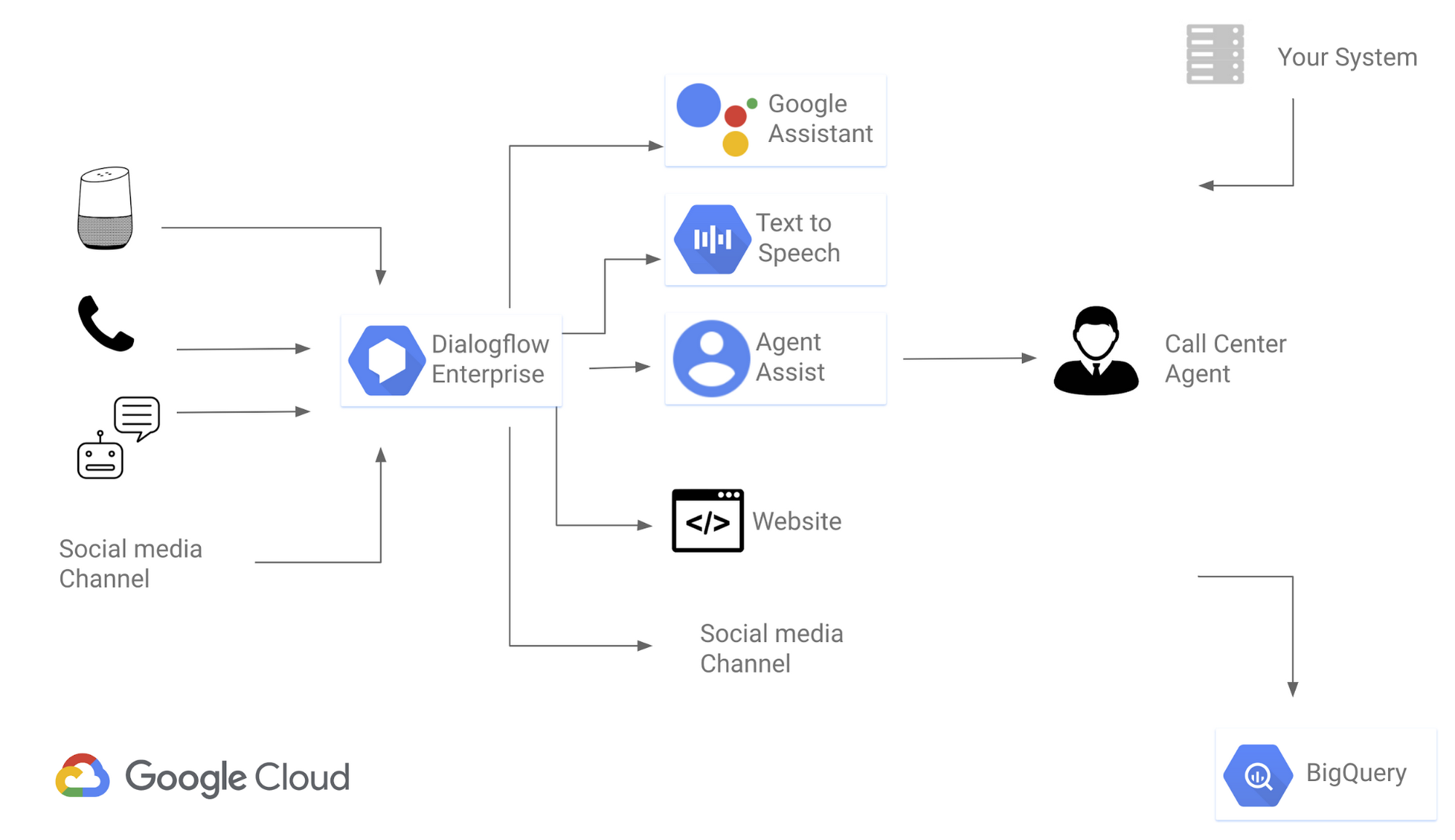

The particular approach described here covers three channels: web chat, the Google Assistant (on a Google Home), and telephone (through a telephony gateway). It also meets a few other requirements:
- Ability to optimize over time. If you know what questions consumers ask and how their sentiment changes during a conversation, the virtual agent (and thus customer satisfaction) can be improved over time.
- Protection of consumer privacy. Per GDPR, sensitive personal information can’t be revealed or stored.
- An easy deployment and management experience. It goes without saying that any company adopting cloud wants to avoid maintaining VMs, networks, and operating systems, as well as monolithic architecture. Thus the solution should take advantage of the ability to easily/automatically build, deploy, and publish updates.
With Google Cloud, meeting these requirements is as easy as stitching a few components together. Let’s have a closer look.
Technology stack
The diagram below provides a high-level overview; I’ll explain each piece in turn.


Dialogflow
Dialogflow Enterprise Edition, an emerging standard for building AI-powered conversational experiences across multiple channels, is the “brains” of this solution. My customers love it because it doesn’t require special natural language understanding skills; a team of content experts and UX designers are all you need to build a robust virtual agent for a simple use case. It also integrates well with other Google Cloud components, offers error reporting and debug information out of the box, and is available along with Google Cloud Support and SLA.
As you can see in the architectural diagram, Dialogflow is integrated with the website channel through the Dialogflow SDK. Integration with the Google Assistant or the Phone Gateway simply requires flipping a switch during configuration.
Channels
Website: The website front-end and back-end are split into two separate Kubernetes containers. The website front-end is build with Angular, and the back-end container is based on Node.js with Socket.io integration. Dialogflow has a Node.js client library, so text messages from the Angular app are passed to the Node.js server app via WebSocket in order to send it to the Dialogflow SDK.
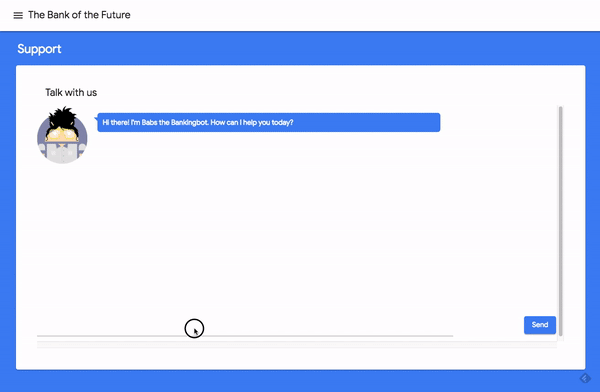

The Google Assistant: Actions on Google is a framework for creating software applications (a.k.a., “actions”) for the Google Assistant. Actions on Google is nicely integrated in Dialogflow: Just log in with your Google account and you can easily deploy your agent to the Google Assistant, enabling interactions on Android apps, via the Google Assistant app on iOS, or on Google Home.
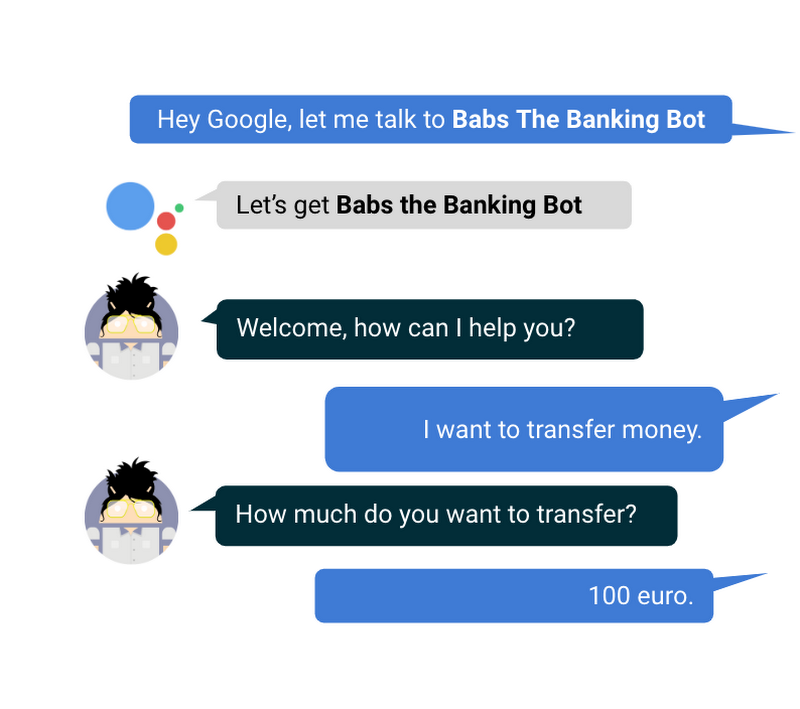

Phone: As mentioned in the introduction, if your plan is to integrate your virtual agent with an existing contact center call system, Google Cloud partners like Genesys, Twilio, and Avaya can help integrate Cloud Contact Center AI with their platforms. (For an overview, see this video from Genesys.) For startups and SMBs, the Dialogflow Phone Gateway feature (currently in beta) integrates a virtual agent with a Google Voice telephone number with just a few clicks, creating an “instant” customer service voice bot.
Analytics
Whether you’re building a full customer service AI system, a simple action for the Google Assistant, or anything in between, it’s important to know which questions/journeys are common, which responses are most satisfying, and if and when the virtual agent isn’t programmed to respond beyond a default “fallback” message. The diagram below shows the solution analytics architecture for addressing this need.
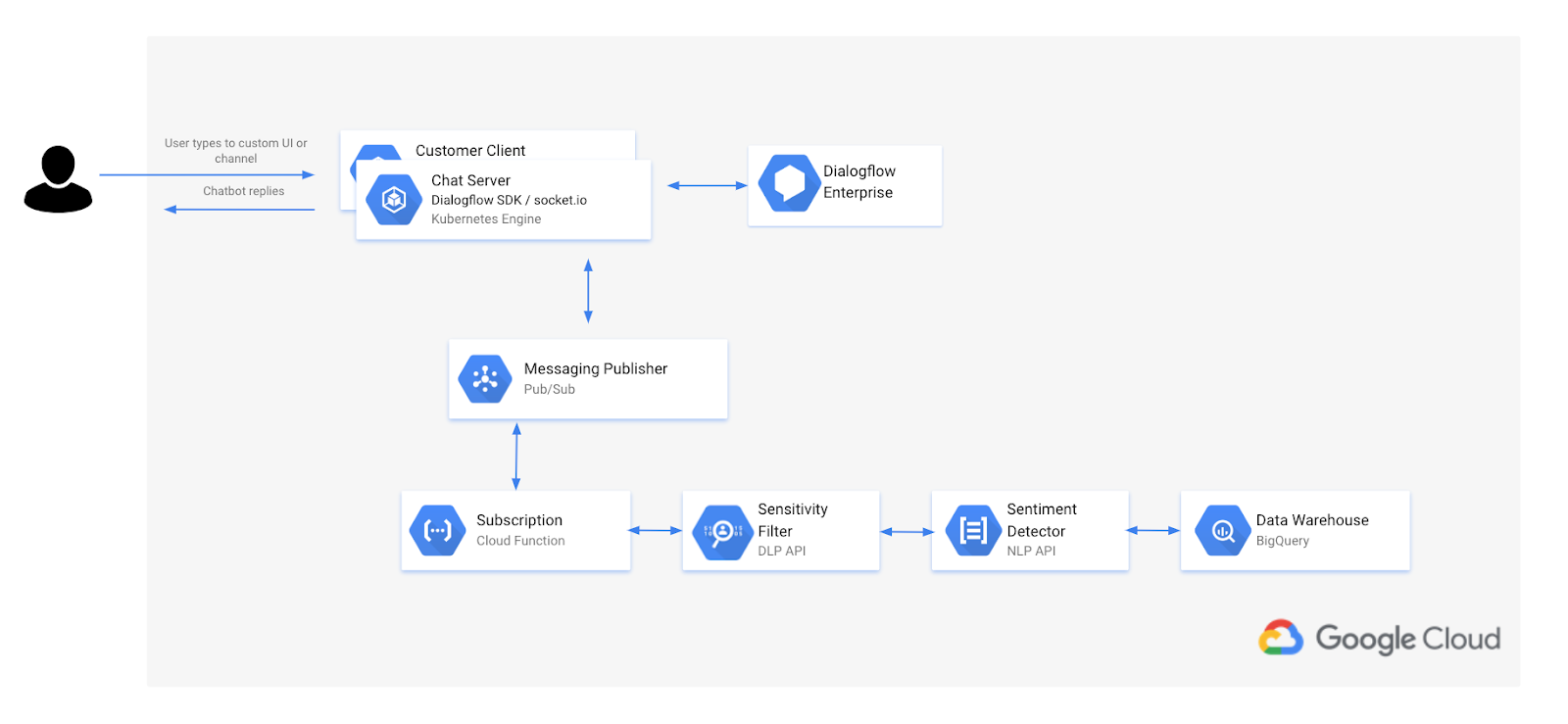

Cloud Pub/Sub: Cloud Pub/Sub, a fully-managed, real-time publish/subscribe messaging service that sends and receives messages between independent applications, is the “glue” that holds the analytic components together. All transcripts (from voice calls or chats) are sent to Cloud Pub/Sub as a first step before analysis.
Cloud Functions: Google Cloud Functions is a lightweight compute platform for creating single-purpose, standalone functions that respond to events without the need to manage a server or runtime environment. In this case, the event will be triggered by Cloud Pub/Sub: Every time a message arrives there through the subscriber endpoint, a cloud function will run the message through two Google Cloud services (see below) before storing it in Google BigQuery.
Cloud Natural Language: This service reveals the structure of a text message; you can use it to extract information about people, places, or in this case, to detect the sentiment of a customer conversation. The API returns a sentiment level between 1 and -1.
Cloud Data Loss Prevention: This service discovers and redacts any sensitive information such as addresses and telephone numbers remaining in transcripts before storage.
BigQuery: BigQuery is Google Cloud’s serverless enterprise data warehouse, supporting super-fast SQL queries enabled by the massive processing power of Google's infrastructure. Using BigQuery you could combine your website data together with your chat logs. Imagine you can see that your customer browsed through one of your product webpages, and then interacted with a chatbot. Now you can answer them proactively with targeted deals.. Naturally, this analysis can be done through a third-party business intelligence tool like Tableau, with Google Data Studio, or through a homegrown web dashboard like the one shown below.
Another use case would be to write a query that returns all chat messages that have a negative sentiment score:
SELECT * from `chatanalytics.chatmessages` where SCORE < 0 ORDER BY SCORE ASC
This query also returns the session ID, so you could then write a query to get the full chat transcript and explore why this customer became unhappy:
SELECT * from `chatanalytics.chatmessages` where SESSION = '6OVkcIQg7QFvdc5EAAAs' ORDER BY POSTED
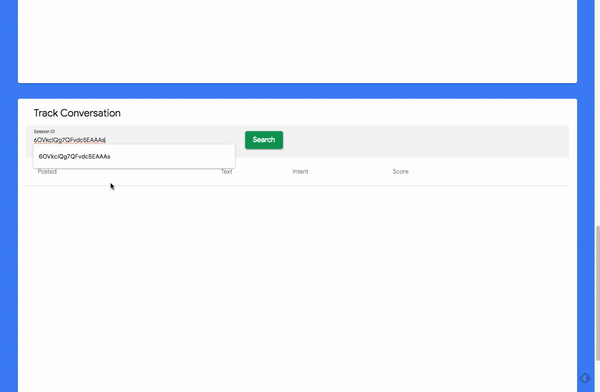

Deployment: Finally, you can use Cloud Build to easily build and deploy these containers to Google Kubernetes Engine with a single command in minutes. A simple YAML file in the project will specify how this all works. As a result, each component/container can be independently modified as needed.
Chatbase (optional): It’s not included in this blueprint, but for a more robust approach, Chatbase Virtual Agent Analytics (which powers Dialogflow Analytics and is free to use) is also an option. In addition to tracking health KPIs, it provides deep insights into user messages and journeys through various reports combined with transcripts. Chatbase also lets you report across different channels/endpoints.
Conclusion
Recently, it took me just a couple of evenings to build a full demo of this solution.
And going forward, I don’t need to worry about installing operating systems, patches, or software, nor about scaling for demand: whether I have 10 or hundreds of thousands of users talking to the bot, it will just work. If you’re exploring improving customer satisfaction with an AI-powered customer service virtual agent, hopefully this blueprint is a thought-provoking place to start!



